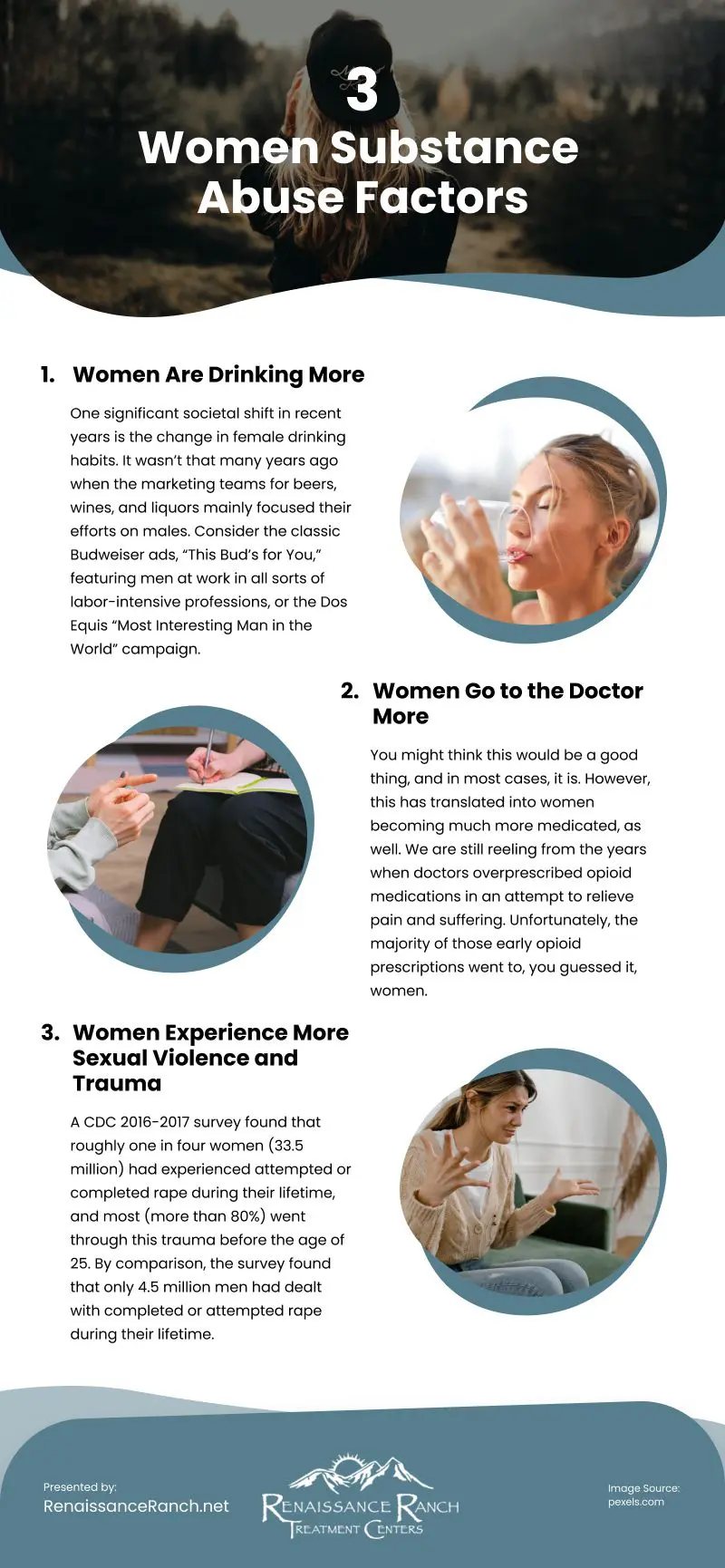
In recent years, medical experts have started to focus more on understanding the root causes of gender-specific substance abuse problems and developing effective treatments for them. Men and women have different physiological characteristics that affect their susceptibility to addiction, and they often face unique social and emotional pressures related to their gender.
Over the past summer, news reports highlighted a concerning trend that women are experiencing an increasing number of alcohol-related deaths compared to men. This, however, is just the beginning of a larger problem of rising levels of substance abuse among women. Read on to learn why there is a significant increase in the number of deaths caused by substance abuse among women.
Women Are Drinking More
In recent years, there has been a significant change in the drinking habits of women, marking a significant societal shift. In the past, marketing teams for alcoholic beverages mainly targeted men. Classic examples include Budweiser’s “This Bud’s for You” campaign, which featured men at work in labor-intensive professions, and Dos Equis’ “Most Interesting Man in the World” campaign.
Alcohol is metabolized less efficiently in women than in men, which means that women can get drunk faster even with fewer drinks. Additionally, women are more prone to the harmful physical and mental effects of alcohol, such as liver disease, cancers, and alcohol use disorder, even with lower levels of exposure. This means that by trying to match or exceed men’s alcohol consumption, women are putting themselves at a significantly higher risk.
Women Go to the Doctor More
It is often thought that women visiting the doctor more frequently is a positive thing, and in most cases, it is. However, this trend has resulted in women being prescribed more medication as well. Unfortunately, we are still recovering from the years when doctors prescribed excessive amounts of opioid medication to relieve pain and suffering. Regrettably, a majority of these earlier opioid prescriptions were given to women. Additionally, the CDC has discovered that women are more likely to use opioid pain relievers for a prolonged period and to request and receive higher doses, which further deepens the issue.
Women Experience More Sexual Violence and Trauma
According to a survey conducted by CDC in 2016-2017, around one in four women (33.5 million) had experienced rape, either attempted or completed, during their lifetime. Shockingly, more than 80% of these women were subjected to this trauma before the age of 25. In contrast, only 4.5 million men had been victims of attempted or completed rape in their lifetime, as per the same survey.
Although women are more likely than men to seek help for addiction, they often struggle to balance the demands of work, childcare, and other family responsibilities with the demands of treatment. As a result, many women drop out of rehab before completing their treatment, increasing the likelihood of relapse. Women’s treatment goals may also differ from men’s, as they are often the primary caregivers for their children. When women enter treatment, their children may be placed in foster care or with a relative until their mother is ready to care for them again. The shame that women feel about their addiction is often compounded by the guilt they experience at having caused their children’s displacement. For many women in recovery, regaining custody of their children and being able to provide for them is a powerful motivator.
source: https://renaissanceranch.net/why-substance-abuse-deaths-are-surging-among-women/
Comments
Download this infographic.
